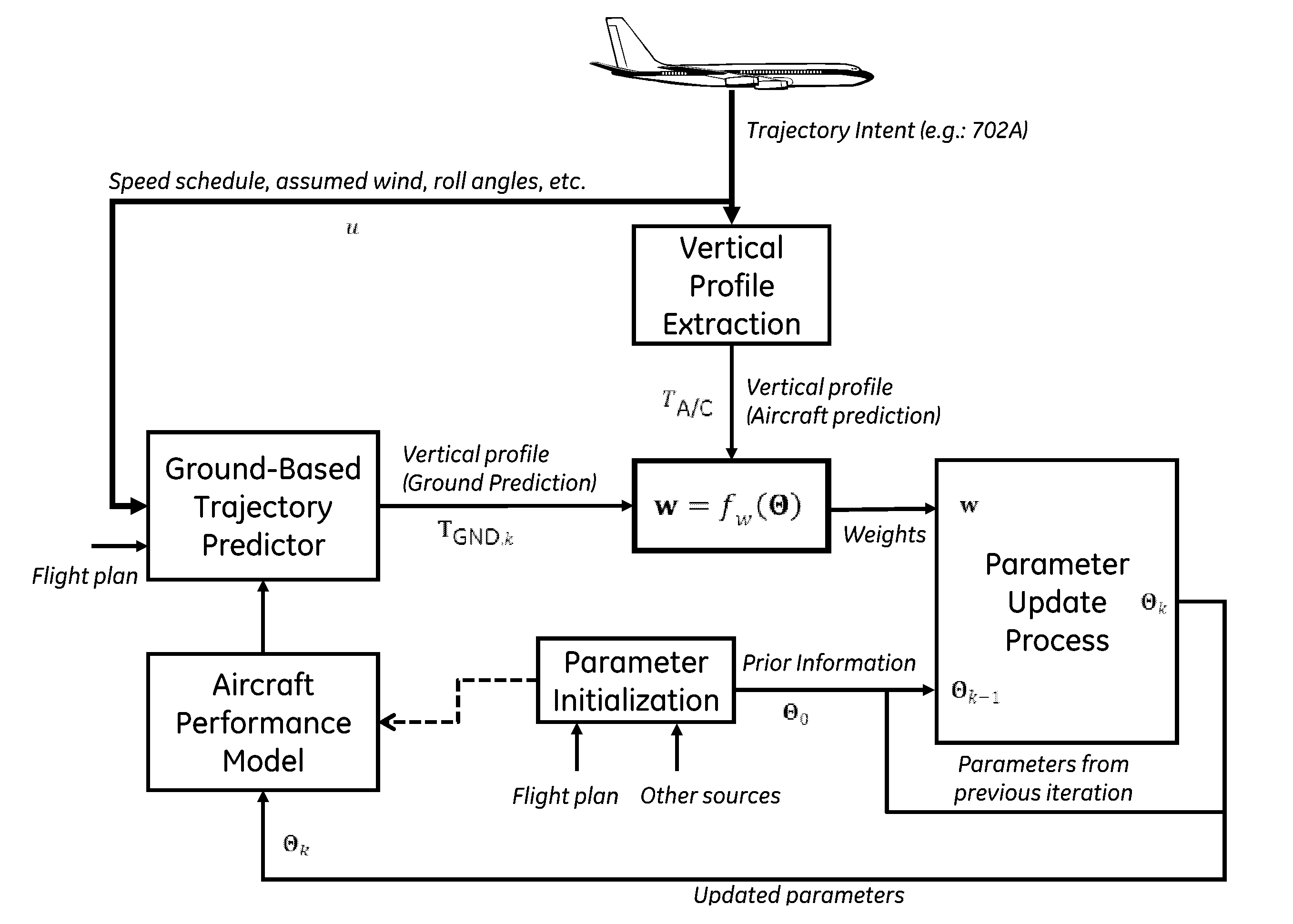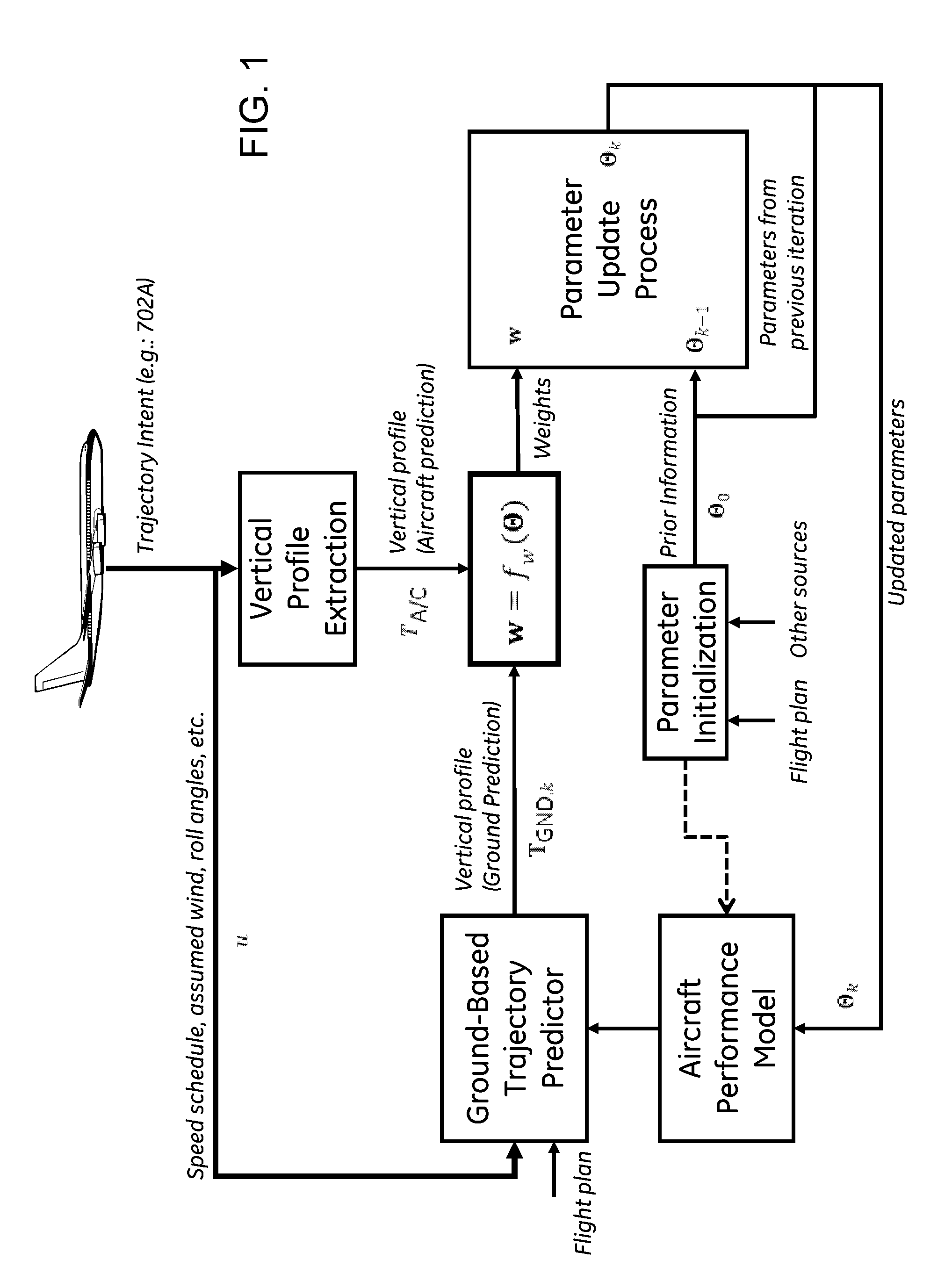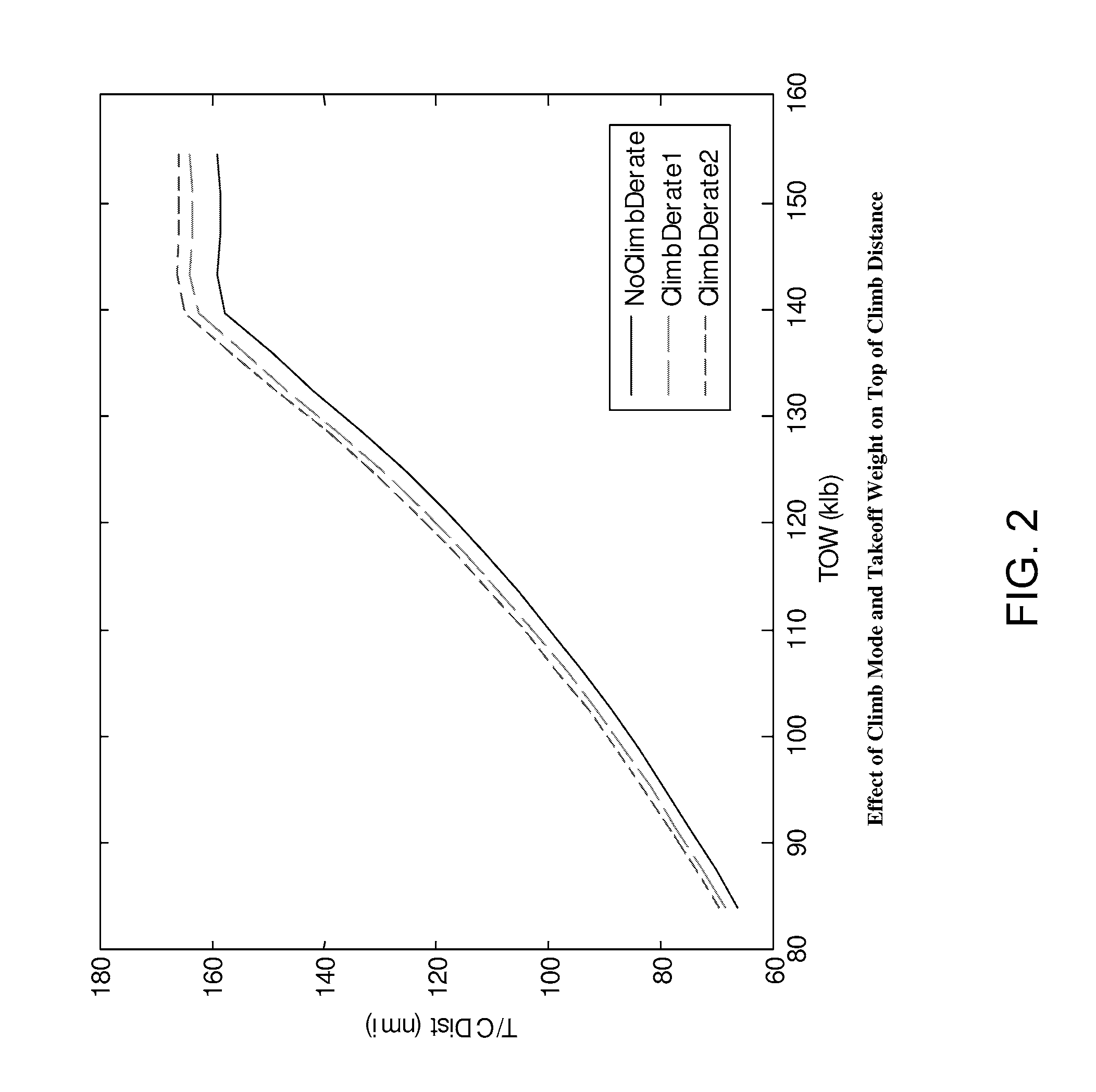Methods and systems for inferring aircraft parameters
a technology of aircraft parameters and methods, applied in the field of methods and systems for inferring aircraft parameters, can solve the problems of performance information not being shared directly with ground automation, performance information cannot be directly deriving or inferring parameters, and other significant gaps in implementing tbo, so as to improve the accuracy of ground-based trajectory predictors, and improve planning capabilities
- Summary
- Abstract
- Description
- Claims
- Application Information
AI Technical Summary
Benefits of technology
Problems solved by technology
Method used
Image
Examples
Embodiment Construction
[0018]The invention describes methods and systems for inferring aircraft performance parameters that are otherwise unknown to ground automation systems. The performance parameters are preferably derived from aircraft state data and trajectory intent information provided by the aircraft operator via a communication link, which may be voice and / or data. In particular, methods and systems of this invention may utilize data link capabilities if available, including those data link capabilities that may be available as part of planned aviation system enhancements. Methods and systems of this invention may also consider current operations where the utilization of voice communications is more prevalent, in which case useful information may include key trajectory change points commonly transmitted by pilots via voice, such as the location of the Top of Descent (ToD) point with respect to the metering fix or the location of the Top of Climb with respect to the wheels-off point. In addition, ...
PUM
 Login to View More
Login to View More Abstract
Description
Claims
Application Information
 Login to View More
Login to View More - R&D
- Intellectual Property
- Life Sciences
- Materials
- Tech Scout
- Unparalleled Data Quality
- Higher Quality Content
- 60% Fewer Hallucinations
Browse by: Latest US Patents, China's latest patents, Technical Efficacy Thesaurus, Application Domain, Technology Topic, Popular Technical Reports.
© 2025 PatSnap. All rights reserved.Legal|Privacy policy|Modern Slavery Act Transparency Statement|Sitemap|About US| Contact US: help@patsnap.com



